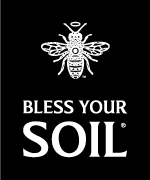
Thinking of DIYing Your Own Plant Food? Read This First!
It’s tempting to whip up your own homemade plant food—after all, it seems like a smart, budget-friendly idea, right? When our beloved plant babies start showing signs of distress—like dark spots, yellowing, or distorted leaves—it’s natural to think they might be missing key nutrients.
The logical next step? Combine different fertilizers to supercharge their growth and create stronger, healthier plants. Sounds like a no-brainer... but not so fast.
The truth is, adjusting and combining fertilizers isn’t as simple as it seems. In fact, an aimless approach can do more harm than good. Keep reading as we break down the science behind plant fertilizers in simple terms, and explain why this process requires careful consideration to truly benefit your plants.
So, the big question. Should we mix various fertilizers, or should we adjust specific nutrients during certain phases? Let's explore.
SUMMARY:
5 minute read
- To Combine or Not To Combine?
- Tailoring Nutrition to Plant Growth Stages & Deficiencies
- Nutrient Deficiencies and Their Causes
- Unraveling the Right Fertilizer Blends

To Combine or Not To Combine?
While it might be tempting to mix fertilizers in the hopes of creating a "super blend," remember that many "plant foods" are already balanced to so-called perfection. Instead of haphazardly combining, aim to understand your plant's requirements and address any deficiencies thoughtfully and accurately.
In summary, don't combine full-set mineral fertilizers (these are the fertilizers with an NPK ratio). That said, there may be opportunities to adjust. Let's read on...

Tailoring Nutrition to Plant Growth Stages & Deficiencies
Some plants have varying nutrient demands at different growth stages. For instance, a flowering plant might crave more phosphorus during its blooming phase than in its vegetative stage. Understanding these nuances and catering to them can make a significant difference in plant health.
For example, during the vegetative stage, you may want to provide a fertilizer with a higher N (nitrogen) ratio to increase foliar growth. Prior to the blooming phase, swapping the higher N ratio to a higher P (phosphorus) ratio will provide more prolific blooms. Conversely, sticking with your high N fertilizer prior to the blooming phase will likely stunt blooms.
If signs of a specific nutrient deficiency become evident, and you have a fertilizer especially rich in that nutrient, a careful combination might be the solution. However, it's essential to approach this with caution and knowledge.
Understanding plant nutrient demands at each growth stage will make a significant difference in plant health.

Nutrient Deficiencies and Their Causes
Even with the best intentions as plant parents, sometimes you might observe your plant showing signs of distress. Though there are some fertilizer-related problems that can create plant ailments, nutrient deficiencies are a common (and overlooked) problem.
Before you go adding twice the recommended dosage of fertilizer to your plant to "gain a maximum amount of nutrients," you should know that nutrient deficiencies can actually result from OVER-fertilization.
Over-fertilization can occur when you combine full-set fertilizers, or add fertilizer to a soil blend already fortified with fertilizer—this is very common. Another layer of complexity is the nutrient interplay. For example, excessive potassium (necessary for triggering flower spiking), can restrict the absorption of magnesium and calcium.
If you're a real nutrient nerd like us, read more on our deep-dive into navigating calcium in fertilizers.
Surprisingly, nutrient deficiencies can result from OVER-fertilization.
So, how do you know when to adjust your fertilizer for nutrient damage control? Nitrogen, phosphorous, potassium, boron, eh! It can be overwhelming to try and figure out which nutrient is the problem when there are so many other factors.
To simplify things, below is a chart showcasing common signs of plant distress or needs.
Pull up this chart when you notice nutrient deficiencies in your plants, and use this as a guide for practical ways on how to correct them.
Handy Chart Showing Plant Nutrient Deficiencies, Red-Flag Signs, & How to Correct
(Keep in mind that many of these signs can be due to lack of light, moisture stress, and root issues, so make sure to rule those out prior to nutrient intervention.)
| Sign | Possible Nutrient Deficiency | Adjustment Option |
|---|---|---|
| Blooming or pre-blooming phase | Potassium | Use a potassium-rich fertilizer, like Grow Goodies, or potassium booster. |
| Yellowing leaves | Nitrogen | Apply a nitrogen-rich fertilizer, such as Big Green Leaves. |
| Purple or red leaves | Phosphorus | Use a high-phosphorus fertilizer. |
| Brown leaf tips | Potassium | Introduce a potassium-rich source, like Grow Goodies. |
| Older leaves turning yellow | Magnesium | Add Epsom salt or a magnesium supplement. |
| Young leaves turning pale, especially if veins stay green | Iron | Apply an iron chelate or iron sulfate (or flush soil if pH is high due to calcium imbalance). |
| Leaves with dark spots (not edema) | Calcium | Check for high acid pH and incorporate dolomite lime to the soil (Start conservatively!) |
| Leaves curling or distorting | Boron |
Apply a boron supplement or soluble borax. |
| pH below 5.5 | Calcium | Add dolomite lime to top soil in very small increments. |
Remember... if your plant is displaying a deficiency, it MAY NOT mean that the nutrient is not present, it may be that the nutrient is not available due to drainage, soil pH crash or spike, or light conditions.
Check to see if your plant has proper drainage, light conditions, and a balanced soil pH before assuming the nutrients are off.

Unraveling the Right Fertilizer Blends
Keeping it simple... No chemistry degree required.
Gardening and houseplant care should be a joy, not a chemistry puzzle, right?!
That's why at Bless Your Soil®, NPK stands for "No Problem, Kiddo!" Sure, it technically represents nitrogen, phosphorous, and potassium, but our message is clear – don't sweat the small stuff, (or the big stuff even, which this is).
We've meticulously crafted our fertilizers to eliminate the guesswork from plant nutrition. Our all-in-one, natural solutions are scientifically balanced, using premium, organically-bonded and natural ingredients. We address the unique nutritional needs of your plants at various growth stages. This ensures they get the right nutrients at precisely the right time.
While some brands of fertilizers can build up certain nutrients in the soil over time, or become unstable, our recipes are made with premium, organically-bonded ingredients that never create toxic imbalances.
"Handy-er" Chart Showing Which Fertilizer You Need
| Type of Plants | Example | Fertilizer to use |
|---|---|---|
| Gardens, Blooms, Ferns | Vegetable plants, roses, bulbs, orchids, flowering shrubs, ferns, Hoya, Fruiting trees and citrus |
 Grow Goodies® |
| Leafy plants | Lettuce, kale, spinach, evergreens, monstera, pothos... non-flowering plants or plants in vegetative phase. |  Big Green Leaves® |
| Ficus | Fiddle Leaf Fig Tree (Ficus lyrata), Ficus benjamin, Ficus Audrey, you get the point... |  Fiddle Leaf Treats® |
Conclusion
If you read this article you must really love your leafy babies! We're rooting for you in becoming a green thumb champ!
Hopefully we've eased your mind about the complexities of adjusting plant nutrients, and dispelled the myth of combining plant fertilizers. Test out Bless Your Soil® on your plants and you'll see just how healthy your plants can get!
Thank you for reading, until next time!




